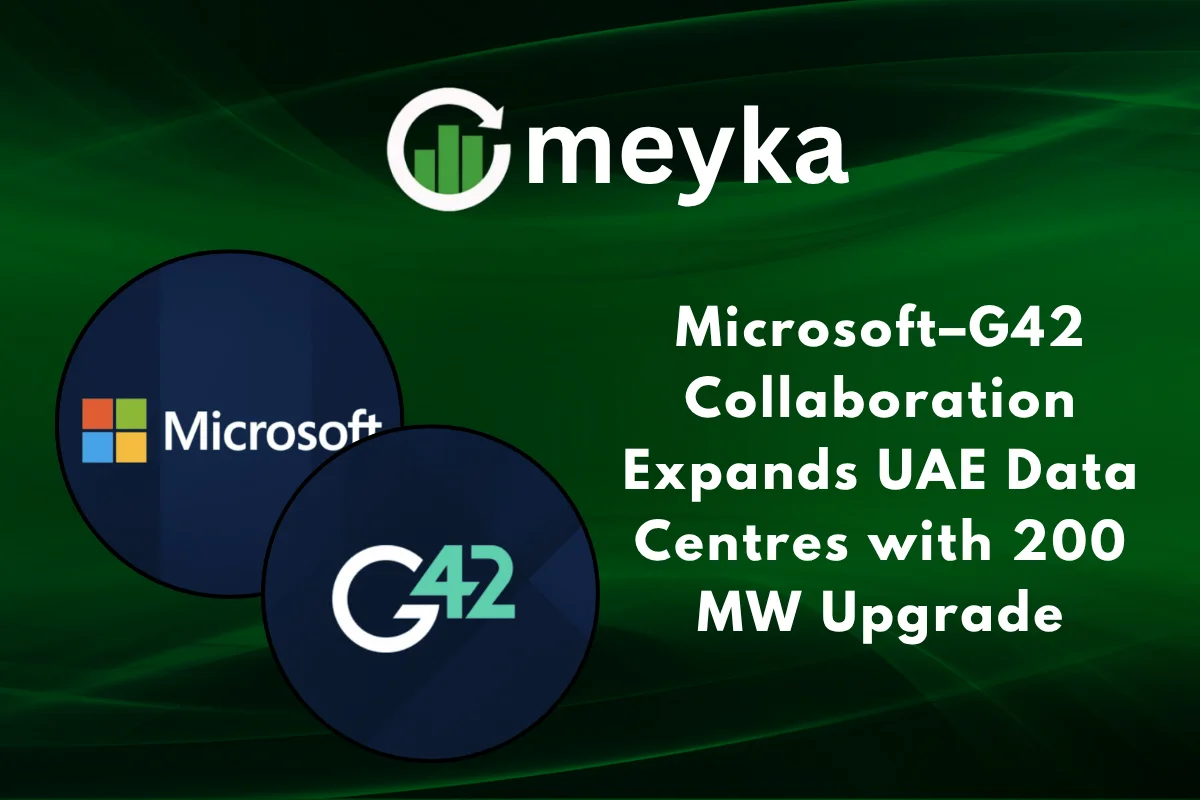Microsoft–G42 Collaboration Expands UAE Data Centres with 200 MW Upgrade
Microsoft has taken a bold step in strengthening its global cloud and artificial-intelligence footprint by partnering with UAE-based G42. The expansion involves a major upgrade to data-centre capacity in the United Arab Emirates (UAE), a 200-megawatt (MW) increase in computing infrastructure that signals a major push for digital sovereignty, regional AI leadership and global tech scale. The announcement marks the start of a multi-billion-dollar commitment by Microsoft in the Gulf region.
This move touches on many of the themes investors follow in today’s economy: “cloud wars”, the increasing cost of infrastructure, and how major tech companies are positioning themselves in global markets. While Microsoft is not typically considered under the headline “AI stocks” at the level of pure-play AI firms, this kind of build-out shows how the broader “stock market” will value infrastructure and global scale.
What the Deal Entails
Here are the key details of the expansion:
- The expansion will deliver an additional 200 MW of data-centre capacity in the UAE.
- The project will be carried out through Khazna Data Centers, a subsidiary of G42.
- Microsoft has already committed billions in investment in the UAE: roughly $7.3 billion by the end of 2025, and an additional $7.9 billion planned for 2026-2029.
- The build-out is expected to begin operations before the end of 2026.
- Microsoft’s partnership includes not just physical infrastructure, but cloud services, AI services and sovereign-grade safeguards for the region.
For Microsoft, this expands its global reach in its Azure cloud platform and reinforces its position in the region’s rapidly growing demand for AI-capable infrastructure.
Why This Matters: Cloud, AI, and Infrastructure
1. Strategic geography and market growth
The UAE is increasingly positioning itself as a regional hub for AI, cloud and digital infrastructure. For Microsoft, expanding there means capturing a region that bridges Africa, the Middle East and Asia. This matters in global “stock research” because growth outside the U.S. often helps diversify risks and open new demand streams.
2. Build-out of infrastructure for AI
AI workloads require massive computing power and energy. With the push from companies like Microsoft and their partners, we are witnessing what some analysts call an “AI infrastructure arms race.” As one report noted: “Because of power constraints in the U.S., AI firms are increasingly looking abroad to fulfil their energy needs.” The 200 MW expansion is a sign of that trend.
3. Implications for Microsoft and the broader tech sector
For Microsoft, this is part of its broader investment strategy in AI and cloud. The company is in many senses, a giant “AI stock” in that its future depends on cloud scale, data-centre capacity and AI services. Investors interested in the stock market will keep an eye on how infrastructure investments like this translate into revenue growth and margins over time.
4. Local sovereignty and regulatory dimension
G42 and Microsoft’s partnership is also about “sovereign cloud” infrastructure – meaning infrastructure that meets local data-governance, security and regulatory requirements. This matters in today’s environment, where data control and compliance are major corporate and government concerns.
Challenges & Risks
While the project is ambitious and offers many opportunities, some risks may impact investors or observers:
- High capital expenditure: Building data centres at scale (200 MW and beyond) involves huge upfront costs. The return on investment depends on how fast capacity is filled and how efficiently it runs.
- Energy and cooling constraints: AI and data-centre operations are energy-intensive. Although the UAE has favourable energy resources, the global cost environment, power prices and sustainability pressures matter.
- Geopolitical & regulatory risks: Because the UAE sits in a sensitive region and global tech firms face export-control issues (for example, with AI chips), regulatory risk is elevated.
- Competition: Other hyperscalers and cloud providers are also expanding globally, meaning Microsoft must deliver not only capacity but competitive services, reliability and innovation.
What This Means for Investors
If you are doing stock research on Microsoft or are evaluating tech infrastructure plays, here are a few takeaways:
- The build-out signals that Microsoft sees the region as a long-term growth area, which is positive for investors who focus on international expansion.
- The infrastructure growth supports Microsoft’s cloud and AI service business, which is central to its growth narrative and valuation as one of the leading “AI stocks”.
- Investors should monitor how this investment converts into actual revenue. The timeline (before the end of 2026) suggests that benefits may be more medium-term rather than immediate.
- Because infrastructure investments are large and sometimes heavy on capital, Microsoft will need to balance growth and margin discipline.
- For the broader stock market, the deal underscores that major technology companies are globally expanding into new regions, which means exposure to regional regulatory, energy and geopolitical factors beyond just domestic markets.
Outlook: What to Watch
- Operational momentum: Monitor updates on the project timeline, when the 200 MW capacity will start operations, and how quickly it is utilized.
- Revenue impact: Look for future financial statements and commentary from Microsoft indicating how this infrastructure contributes to Azure and AI services growth.
- Cost and margin impact: Infrastructure spend can drag margins if utilisation is slow; investors will watch how Microsoft handles this.
- Regulatory / export-control updates: Because the UAE-US tech export landscape is evolving, any change in export licences or geopolitical friction could affect the project.
- Competitive dynamics: How other tech giants respond or expand in similar regions may affect Microsoft’s competitive edge.
Conclusion
This collaboration between Microsoft and G42 to expand data-centre capacity in the UAE by 200 MW is a significant milestone in the company’s global strategy. It underlines how infrastructure, cloud and AI are becoming deeply interconnected in the tech sector, and how major players like Microsoft are making long-term bets outside their home markets.
For those studying the stock market and analysing tech-heavy companies, these types of moves matter; they signal where growth may come from, the risks involved, and how the concept of “AI stocks” is evolving beyond just software into physical infrastructure and global operations.
FAQs
Microsoft sees the UAE as a strategic hub for cloud and AI infrastructure, connecting Africa, the Middle East and Asia. The region offers growth potential, favourable energy resources, and a partner in G42 to accelerate development.
In the medium term, the expansion supports Microsoft’s Azure cloud business, strengthens its AI-services offering and opens new markets for growth. However, it also increases capital expenditure and exposure to global infrastructure risks.
Key risks include high upfront infrastructure costs, energy/operational challenges, regulatory and export-control uncertainties, regional geopolitics, and how quickly the new capacity will convert into profitable services.
Disclaimer:
The content shared by Meyka AI PTY LTD is solely for research and informational purposes. Meyka is not a financial advisory service, and the information provided should not be considered investment or trading advice.






